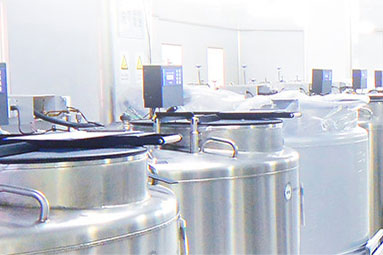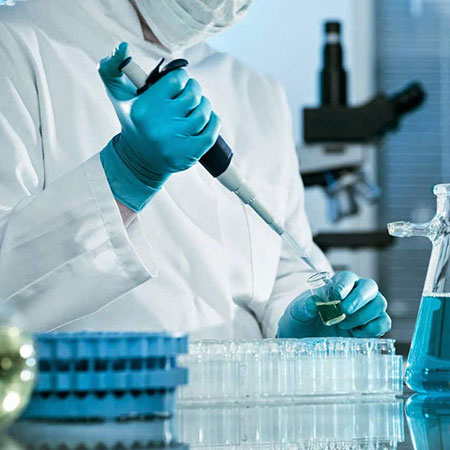How to make a veal of it
In 2008, the American animal rights organisation People for the Ethical Treatment of Animals (Peta) announced a US$1million reward to anyone who could use chicken cells to develop a marketable lab-grown meat by June this year.
The contest deadline has been extended to January 1next year because no one has succeeded as yet. But scientists are getting closer to producing the first test tube chicken nugget. According to Peta, “some promising steps have been made towards this technology, but we’re still several years away from having in vitro meat being available to the general public”.
Over the years there have been many attempts to create meat substitutes to please both vegans and animal rights activists. Many involve soy protein (such as Tofurky roasts and Soyrizo breakfast burritos) or wheat-gluten (such as Seitan gyros), or a combination of both.
But Peta’s latest project is no meat substitute. We’re talking real meat and flesh, but produced in a lab, using animal stem cells placed in a medium to grow and reproduce. No killing involved.
The Netherlands has beenleading the way in research. Stem cell scientist Dr Mark Post, from Maastricht University, expects to unveil the first-ever taste test of an in vitro hamburger next month – albeit at an expected initial price of ¤250,000 (HK$2.5 million).
Some biologists warn that cell culture is expensive and technically difficult. But others believe costs will fall to mass-market prices once the technology becomes more common.
Benjamin Wang, managing director of the Hongkong Stem Cell Centre, says: “In vitro meat could replace traditional meats in the future if it proves to be energy efficient. Specifically on a large scale, if we are committed to this research, I think it is very likely to be able to provide a new source of food.”
Consuming lab-grown meat won’t have any more adverse effects on human health than real meat, according to Jason Matheny, founder of New Harvest, an organisation which is devoted to advancing technologies for new meat substitutes.
Our goal is to develop a vegetable surrogate for meat that is both juicy and fibrous
FLORIAN WILD, RESEARCHER, EU LIKEMEAT PROJECT
“Cultured meat is made of the same stuff that real meat is made of. But in principle one could make it much healthier by controlling the amount and type of fat,” he says.
In vitro meat is also more eco-friendly and less costly to produce than traditional meat. Fatted animals have to consume five to eight kilograms of grain just to generate one kilogram of meat. Globally, more than 60 billion animals are killed for consumption each year.
The UN Food and Agriculture Organisation expects world consumption of meat to double between 2000 and 2050. The challenge of increasing food supplies with less land and water available will be enormous.
In new research published in the online-only journal BMJ Open last week, scientists in Britain suggest that reducing red and processed meat consumption by about 40 per cent to 45 per cent would shrink Britain’s carbon footprint by 28 million tonnes a year from the current 456 million tonnes.
According to the research, food and drink account for a third of all greenhouse gas emissions attributable to British consumers, with livestock farming accounting for around half of this proportion.
Food scientists are not only working to replicate meat, but also eggs, with test tube technologies.
Plant-based alternatives that mimic the nutrition, texture, taste and functionalities of meat are being developed. The “emerging, next generation plant-based meat [alternatives] promise to deliver the sensory experience of conventional animal proteins for specific culinary applications”, says Nicholas Genovese, visiting scholar and consultant at the University of Missouri-Columbia, who made a presentation at the Institute of Food Technologists Annual Meeting and Food Expo in Las Vegas.
There are many plants that are suitable for the production of meat substitute products – such as wheat, peas, lupins and soya beans – according to researchers for the EU project, LikeMeat. They are investigating how these can be incorporated into a product that tastes like meat. “Our goal is to develop a vegetable surrogate for
meat that is both juicy and fibrous, and that also has a pleasant flavour,” says Florian Wild, researcher at the Fraunhofer Institute for Process Engineering and Packaging IVV in Freising, in Bavaria.
Scientists last year showed that the process of creating in vitro meat will use 1per cent of the land and 4 per cent of the water, compared to conventional meat production.
Once scalable cultivation methods for test tube meat have been optimised in a lab, production will be transferred to a dedicated facility, says Genovese. He likens this facility to a bakery, brewery or dairy, and suggests it be called a “carnery” – from the Latin “carnis”, for meat.
In contrast to pastures and factory farming, carneries can be located in or near urban areas and accommodate decentralized production close to population centres, he says. “As consumers understand that cultured meat will never be produced in the lab, the lab-grown meat stigma will fade.”






SUBSCRIBE TO OUR NEWSLETTER